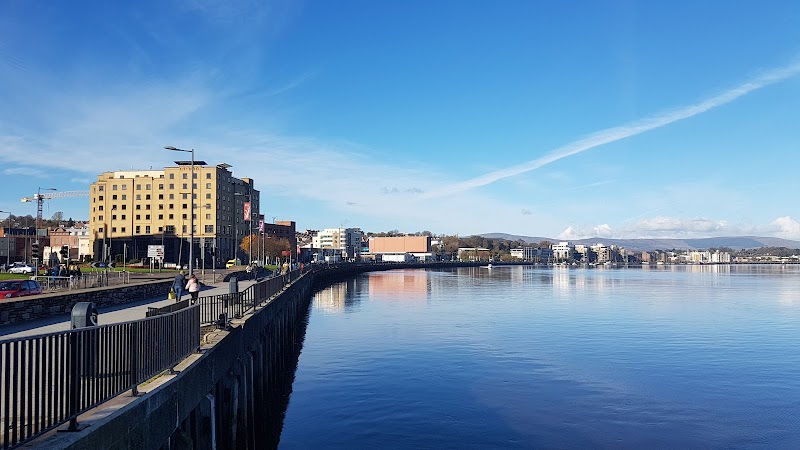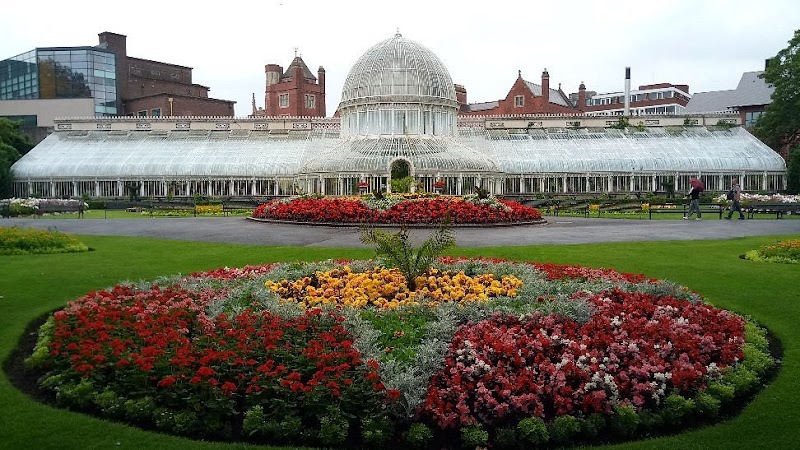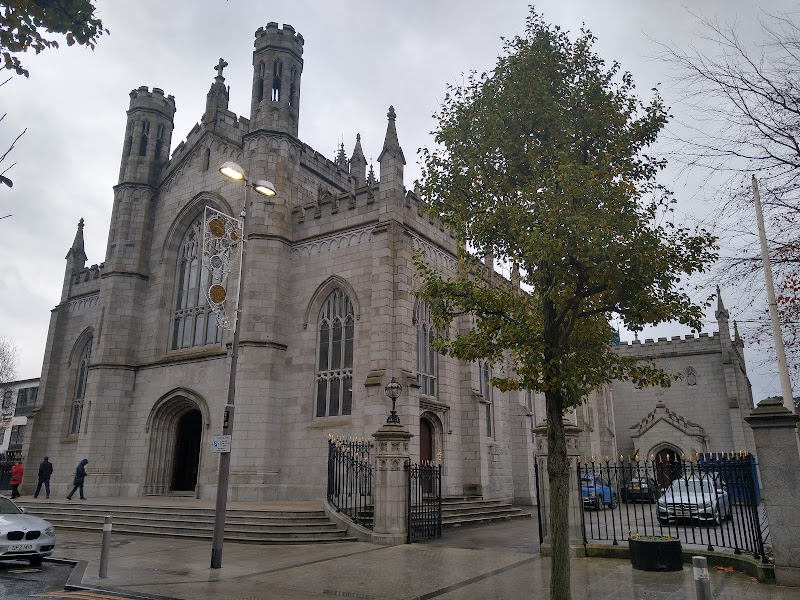Welcome to the enthralling Northern Ireland!
Have you ever wondered that Northern Ireland, comprising only about 30% of the island, houses an impressive 50% of Ireland's lakes? This verdant and vibrant destination, brimming with natural beauty, is a paradise for enthusiasts of dramatic landscapes, rich culture, and intriguing history. From the majestic Giant's Causeway, a natural marvel steeped in myth and legend, to the lively streets of Belfast, Northern Ireland presents a plethora of unforgettable vistas and experiences.
Embarking on a journey through Northern Ireland is best done with a well-structured itinerary. Our meticulously curated tourist map functions as an ideal companion to navigate through the region's mesmerizing allure. It's designed to aid you in exploring the vast and varied landscape of Northern Ireland, ensuring that no hidden treasures are left unexplored.
Booking.comUnveiling the Captivating Wonders of Northern Ireland
Although small in size, Northern Ireland's deep-rooted history, unique culture, and awe-inspiring landscapes make it a destination worth visiting. The enchanting lands of Northern Ireland are filled with dramatic coastlines, captivating heritage sites, and vibrant cities, all waiting to be discovered. Let's delve into some of the most extraordinary attractions that this swath of the Emerald Isle has to offer.
The Walled City of Derry
Drenched in history and buzzing with life, Derry, also known as Londonderry, beckons visitors to explore its ancient walls and vibrant heart. The city's walls, standing strong for over 400 years, offer an unparalleled view of the cityscape and beyond. Not far from these ancient fortifications, you'll find the iconic Peace Bridge, a symbol of unity and testament to the city's ongoing evolution.
The Mesmerizing Mourne Mountains
If you're captivated by the great outdoors, the Mourne Mountains offer a refuge of tranquil landscapes and untouched wilderness. This region served as the muse for CS Lewis's magical world of Narnia, and it's not hard to see why. Whether you decide to hike, cycle, or simply soak in the views, these mountains offer an escape into a realm of enchantment. For a comprehensive guide to your journey, don't miss checking out the tourist map of the United Kingdom.
The Mysterious Dark Hedges
For a touch of the mystical, the Dark Hedges, with their enigmatic beauty, are sure to enthrall you. This bewitching avenue of gnarled beech trees gained fame as a filming location for the Game of Thrones series. The intertwined branches form a natural tunnel, marking it as one of the most photographed spots in Northern Ireland.
The Titanic Belfast
Stepping into Northern Ireland's industrial heritage, the Titanic Belfast offers an immersive journey into the saga of the world's most famous ship. The museum's interactive exhibits narrate the tragic story of the Titanic, commencing from its construction in Belfast's shipyards to its ill-fated voyage. A visit here offers a fascinating insight into a significant chapter in history.
The Serene Sperrins
One of the largest and least explored mountain ranges in Ireland, the Sperrins offer a peaceful retreat into nature. This Area of Outstanding Natural Beauty boasts lush valleys, pristine rivers, and ancient stone circles. The Sperrins are an ideal destination for walking, cycling, or simply unwinding in the tranquillity of the Irish countryside.
From the bustling streets of Derry to the mystical allure of the Dark Hedges, Northern Ireland unfurls a mosaic of experiences blending history, culture, and nature in a truly captivating manner. As you chalk out your itinerary, remember to explore not only the well-trodden paths but also the hidden corners of this lively land.

Handy Information for Your Trip to Northern Ireland
Transportation and Mobility
Northern Ireland features a well-integrated public transportation system, operated by Translink, encompassing buses and trains. Particularly in Belfast, the Metro Bus service is extremely convenient, with routes covering the entire city. If you're planning to explore the countryside, consider renting a car for greater flexibility. Remember that in Northern Ireland, driving is on the left-hand side of the road.
Schedules and Prices
Operating hours for public transport vary, but most services in Belfast commence around 6:00 AM and continue until 11:00 PM. It's advisable to check the Translink website for current schedules and prices. For attractions, prices can vary significantly, but generally, entry fees range from £10 to £20 per adult. In terms of dining, a meal at an inexpensive restaurant in Belfast may cost around £12, while a three-course meal for two at a mid-range restaurant averages £50.
Safety Tips
While Northern Ireland is generally a safe destination to visit, as with any travel spot, it's crucial to stay alert. Avoid isolated areas after dark, especially in larger cities. In the countryside, remember to respect the local flora and fauna, and always stay on marked trails when hiking or sightseeing.
Practical Tips
The weather in Northern Ireland can be unpredictable, so packing layers and waterproof clothing is advisable regardless of the season. The busiest tourist season is from June to August, so for a quieter experience, consider visiting in the spring or autumn. Booking attractions in advance is recommended, especially during peak season. For currency, Northern Ireland uses the British pound (£), and credit cards are widely accepted. Don't forget to carry a universal adapter for your electronic devices as the UK uses type G plugs.

Frequently Asked Questions about a Trip to Northern Ireland
While we've covered a lot about Northern Ireland, you might still have some specific questions. We've compiled some of the most frequently asked questions to help you further plan your journey.
1. What are some unique culinary experiences in Northern Ireland?
From delectable Irish stew to fresh seafood, Northern Ireland offers a delightful gastronomic adventure. Don't miss trying the famous 'Ulster Fry', a hearty breakfast that's sure to fuel your day of exploration. For a sweet treat, the locally baked 'Fifteens' are a must-try. And for a truly authentic experience, consider joining a food tour or cooking class to dive deeper into the local cuisine.
2. Are there special events or festivals that I should plan my trip around?
Yes, Northern Ireland hosts a vibrant array of festivals and events throughout the year. The St. Patrick's Day celebrations in March are particularly festive. In July, the 'Twelfth of July' commemorates the Battle of the Boyne with parades and festivities. The Cathedral Quarter Arts Festival in May and the Belfast Film Festival in April are also worth aligning your trip with. Always check the official event websites for the latest information and schedules.
3. Are there any unique shopping experiences in Northern Ireland?
Northern Ireland boasts a variety of shopping experiences, from bustling city markets to quaint country shops. The St. George's Market in Belfast is a popular spot, offering everything from fresh produce to local crafts. For high-end retail, Victoria Square offers a blend of international and local brands. For unique souvenirs, consider buying local crafts, Irish linen, or a bottle of locally distilled whiskey.
4. Are there any particular customs or etiquette I should be aware of?
While most customs in Northern Ireland align with standard UK etiquette, it's important to be aware of the region's sensitive political history. Avoid discussing topics related to religion and politics, especially the conflict known as "The Troubles". On a lighter note, Irish people are known for their friendliness and humor, so feel free to engage in friendly banter.
5. What are some unique outdoor activities in Northern Ireland?
Beyond the classic hikes and sightseeing, Northern Ireland offers out-of-the-ordinary outdoor experiences like sea kayaking, rock climbing, and even llama trekking. The Mourne Mountains are an ideal spot for rock climbing, while the coastlines of Antrim and Down are perfect for sea kayaking. For a more tranquil experience, join a llama trek in the stunning Faughan Valley.
6. What are some of the local languages spoken in Northern Ireland?
While English is the most widely spoken language in Northern Ireland, you might also encounter Irish Gaelic and Ulster Scots. Although not necessary for communication, learning a few phrases in these languages can enhance your cultural experience. Nevertheless, most locals will appreciate a simple 'thank you' or 'please' in English.


